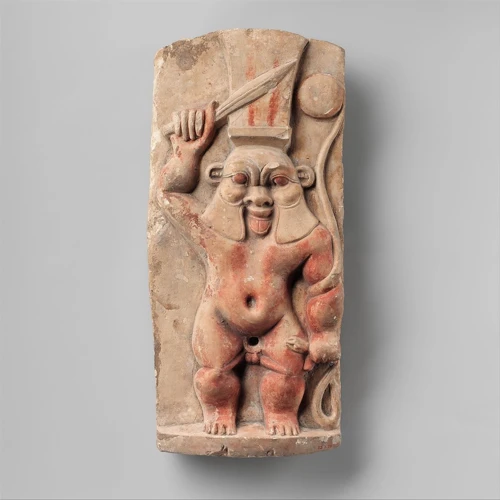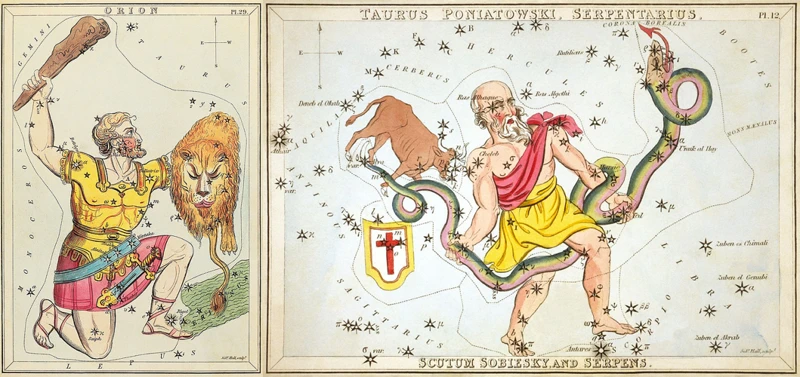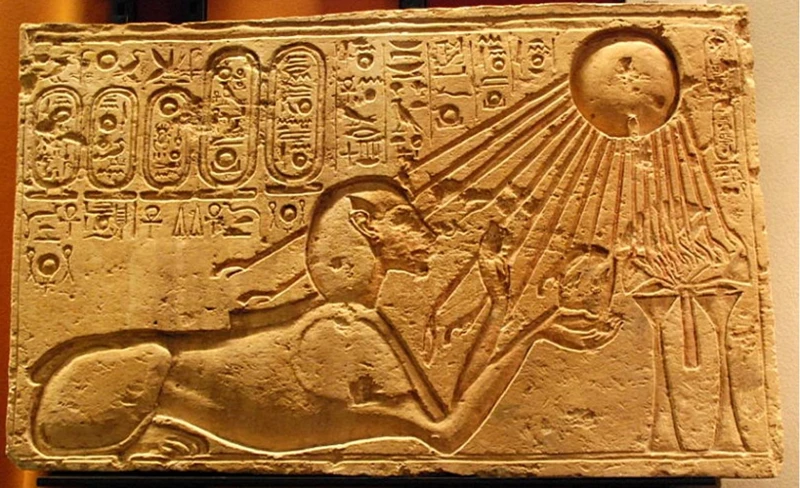Ancient Egypt, a civilization shrouded in mystery and wonder, is often synonymous with its enigmatic rulers, the Pharaohs. These majestic figures held immense power and were regarded as both divine and mortal. Unraveling the tales of their reigns is like peering into a labyrinth of history, where each corner holds secrets waiting to be discovered. From the Early Dynastic Period and the rise of the Old Kingdom to the glorious Middle and New Kingdoms, this article delves into the captivating world of the Pharaohs, shedding light on their influence and legacy that still resonates in modern times. Join us as we explore the rich tapestry of Ancient Egypt’s rulers and their fascinating journey through the sands of time.
Contents
- Early Pharaohs
- Middle and New Kingdoms
- The Golden Age: Hatshepsut and Akhenaten
- Ramesses the Great and the Decline
- Conclusion
-
Frequently Asked Questions
- 1. What does the term “pharaoh” mean?
- 2. How were pharaohs viewed by the ancient Egyptians?
- 3. Did all pharaohs build monumental pyramids?
- 4. Who was the first female pharaoh?
- 5. What was the significance of the Middle Kingdom?
- 6. Who was Akhenaten, and what made his reign unique?
- 7. What led to the decline of the pharaohs and the end of Ancient Egypt?
- 8. Were all pharaohs considered good rulers?
- 9. Were there any foreign-born pharaohs in Ancient Egypt?
- 10. How did the pharaohs leave their legacy in Egyptian society?
- References
-
Frequently Asked Questions
- Who were the Pharaohs of Ancient Egypt?
- How long did the rule of the Pharaohs last?
- What was the role of the Pharaoh in Egyptian society?
- Did all Pharaohs build pyramids as tombs?
- Who was the most famous Pharaoh of Ancient Egypt?
- How were Pharaohs chosen to succeed the throne?
- What happened to Egypt during the Middle Kingdom?
- Who was Hatshepsut and why was she significant?
- What was the Amarna Period under Akhenaten’s rule?
- How did the reign of Ramesses the Great mark the decline of the Pharaohs?
- References
- Read More
Early Pharaohs

In the enigmatic realm of Ancient Egypt, the reign of the Early Pharaohs marked the genesis of a powerful civilization that would endure for centuries. Emerging during the Early Dynastic Period, these pharaohs were at the helm of the nascent empire, establishing their divine rule over the land of the Nile. Their rule, marked by the construction of monumental structures such as the Step Pyramid of Djoser, showcased the beginnings of the grand architectural achievements that would become the hallmark of Egypt. It was during the Old Kingdom that the mighty pyramids, such as the Great Pyramid of Giza, rose towards the heavens, transcending time and serving as a testament to the undying power of the pharaohs. These early rulers laid the foundation upon which Ancient Egypt would flourish, paving the way for the captivating sagas of the Middle and New Kingdoms that would follow.
Early Dynastic Period
The Early Dynastic Period of Ancient Egypt is a pivotal chapter in the nation’s history, characterized by the establishment of the first centralized state. Spanning from approximately 3100 BCE to 2686 BCE, this era witnessed the rise of several powerful pharaohs who laid the groundwork for the successive dynasties to come. The pharaohs of this period, known as the “Kings of Upper and Lower Egypt,” took on both political and religious roles, serving as divine rulers who maintained order and ensured prosperity for their people. They were believed to have a direct connection to the gods and were entrusted with the responsibility of upholding ma’at, the concept of cosmic balance and harmony.
During the Early Dynastic Period, the pharaohs consolidated their power and sought to centralize control over various city-states. They established administrative systems, implemented laws, and oversaw economic activities such as trade and agriculture. In addition to their political duties, the pharaohs also played a crucial role in religious rituals and ceremonies. They were seen as intermediaries between the earthly realm and the divine, responsible for maintaining a harmonious relationship between humans and the gods. Their connection to the gods was demonstrated through elaborate religious practices, divine offerings, and the construction of monumental temples.
One notable ruler from this period is Pharaoh Narmer, also known as Menes, who is credited with unifying Upper and Lower Egypt, thereby establishing the first dynasty of Ancient Egypt. The Early Dynastic Period witnessed advancements in art and architecture, with the development of new artistic styles and the construction of mud-brick mastaba tombs for the pharaohs. These tombs, along with intricate burial rituals, showcased the belief in the afterlife and the pharaohs’ quest for eternal existence.
The Early Dynastic Period of Ancient Egypt set the stage for the flourishing civilization that was to come. It laid the foundation for the divine and authoritative role of the pharaohs, shaping the ideology and traditions that would permeate Egyptian society for millennia to come. The legacy of this period can still be seen in the grandeur of Egypt’s ancient monuments and the enduring fascination surrounding the pharaohs’ rule. Through their leadership and divine authority, the pharaohs of the Early Dynastic Period played an integral role in shaping the destiny of Ancient Egypt.
Old Kingdom
The Old Kingdom of Ancient Egypt, spanning from approximately 2686 BC to 2181 BC, is often regarded as the pinnacle of the civilization’s achievements. This golden age saw the rise of powerful pharaohs who reigned over a unified kingdom, establishing a strong central government. During this period, the pharaohs held absolute control and were responsible for the administration of the state, the implementation of laws, and the management of resources. The Old Kingdom was characterized by stability, prosperity, and monumental architectural marvels. The pharaohs commissioned the construction of impressive pyramids as their tombs, such as the iconic Pyramids of Giza, which still stand as a testament to the grandeur and engineering prowess of the era. These pyramids were built in perfect symmetry and were surrounded by elaborate mortuary complexes, complete with temples and causeways. The Old Kingdom also witnessed the development of an intricate bureaucracy, with viziers and officials who carried out the day-to-day affairs of the state. Religion played a central role in the Old Kingdom as well. The pharaohs were seen as divine rulers, serving as intermediaries between the people and the gods. They were believed to possess the power to maintain Ma’at, the cosmic balance of order and harmony. The pharaohs were also responsible for overseeing religious rituals and ensuring the prosperity of the land. The art and culture of the Old Kingdom flourished as well. Elaborate statues and relief carvings adorned temples, depicting the pharaohs in divine regalia. Hieroglyphic writing saw significant development, and the earliest known royal funerary texts, known as the Pyramid Texts, were inscribed in the pyramids’ chambers. The decline of the Old Kingdom came gradually, marked by weakened central authority, economic challenges, and a breakdown of social order. This eventually led to the fragmentation of power and the onset of the First Intermediate Period. Nevertheless, the Old Kingdom remains a remarkable era in Ancient Egypt’s history, a time when the pharaohs held unparalleled power and the civilization reached unprecedented heights of cultural and architectural achievement.
Middle and New Kingdoms

As the tides of time swept across the shifting sands of Egypt, the Middle and New Kingdoms emerged as a pinnacle of prosperity and grandeur. The Middle Kingdom saw a resurgence of pharaonic power and centralized rule, characterized by benevolent leaders who aimed to restore harmony and order after a period of turmoil. During this era, remarkable architectural marvels like the rock-cut temples of Abu Simbel rose in splendor, showcasing the immense skills and artistic craftsmanship of the ancient Egyptians. It was during the New Kingdom that Egypt reached its zenith of power and influence, with pharaohs like Hatshepsut and Akhenaten leaving indelible marks on history. Hatshepsut, notably the first female pharaoh, led Egypt to unprecedented prosperity, while Akhenaten revolutionized the religious landscape with his devotion to Aten, the sun disk. These tumultuous yet magnificent epochs laid the groundwork for the remarkable tales that would define the Pharaohs and their enduring legacy in the annals of Egyptian history.
Middle Kingdom
During the Middle Kingdom, which spanned from around 2055 BCE to 1650 BCE, Egypt experienced a period of reunification and stability following a period of political fragmentation known as the First Intermediate Period. The pharaohs of this era, such as Mentuhotep II and Amenemhat I, sought to restore harmony and centralized control over the kingdom. This was achieved through various reforms and initiatives that rejuvenated the economy, strengthened trade networks, and fostered a sense of cultural and artistic revival.
One notable development during this time was the expansion of the Egyptian empire into new territories, particularly in Nubia to the south. The pharaohs launched military campaigns to assert their authority and protect Egypt’s interests, establishing fortified garrisons and trade networks along the Nile. The Middle Kingdom also witnessed the emergence of new diplomatic ties, with evidence of diplomatic exchanges between Egypt and other civilizations such as the Hittites.
In terms of architecture and artistic expression, the Middle Kingdom saw a resurgence in the construction of monumental structures and the flourishing of artistic styles. Temples, palaces, and tombs were built on a grand scale, characterized by intricate carvings and vivid wall paintings. The famous Mortuary Temple of Mentuhotep II in Deir el-Bahari and the Lahun Pyramid of Senusret II are just a few examples of the architectural marvels of this period.
Another significant aspect of the Middle Kingdom was the emphasis placed on social and economic welfare. Pharaohs during this time prioritized public works projects, such as irrigation systems and infrastructure improvements, to enhance agricultural productivity and ensure a stable food supply. These initiatives aimed to alleviate the impact of natural disasters and protect the population from famine.
Religiously, the pharaohs continued to affirm their divine right to rule, but there was also a shift in the perception of kingship. The Middle Kingdom pharaohs presented themselves as paternal figures, concerned with the welfare of their subjects. They were viewed as intermediaries between the gods and the people, promoting a sense of harmonious coexistence.
The Middle Kingdom was a period of renewal and prosperity for Egypt. Its pharaohs established a legacy of stability, administrative reforms, and cultural blossoming that would influence future dynasties. This era laid the foundations for the grandeur of the New Kingdom, which would herald even greater achievements in Egypt’s history. For more information on the role of priests and shamans in Mayan mythology, check out this link.
New Kingdom
The New Kingdom, often hailed as the golden age of Ancient Egypt, was a period of immense prosperity, military prowess, and cultural resurgence. Spanning from the 16th century BC to the 11th century BC, this era witnessed a series of remarkable pharaohs who solidified Egypt’s dominance in the ancient world. The New Kingdom saw the rise of prominent figures, such as Hatshepsut, who shattered societal expectations by becoming one of Egypt’s few female pharaohs. Known for her ambitious building projects, including the impressive Mortuary Temple of Hatshepsut, she left an indelible mark on Egypt’s architectural landscape. Another notable pharaoh of this period was the mighty Ramesses II, also known as Ramesses the Great. His reign was characterized by grand military campaigns, vast construction projects like the temples of Abu Simbel, and his role in the epic Battle of Kadesh. The New Kingdom also saw a religious revolution spearheaded by Akhenaten, who attempted to shift Egypt’s religious focus to the worship of the sun disc, Aten. This marked a significant departure from traditional polytheistic beliefs and influenced art and architectural styles during his reign. Despite the radical changes brought about by Akhenaten, the subsequent pharaohs restored the old ways, and the New Kingdom continued to thrive. The era also witnessed the international influence of Egypt, with trade and diplomatic relations flourishing with neighboring kingdoms and civilizations. It was during this time that Tutankhamun, the young pharaoh whose tomb was discovered intact in the 20th century, briefly ruled. The New Kingdom witnessed the construction of iconic structures such as the Temple of Karnak, the Ramesseum, and the Valley of the Kings, where numerous pharaohs were laid to rest. As the New Kingdom drew to a close, internal instability and external threats eroded Egypt’s power, leading to its eventual decline. However, the legacy of the New Kingdom pharaohs persists, as their achievements and cultural contributions continue to captivate our imaginations and shed light on the splendor of Ancient Egypt.
The Golden Age: Hatshepsut and Akhenaten

During the illustrious period known as “The Golden Age,” two remarkable pharaohs left an indelible mark on the annals of Ancient Egypt’s history: Hatshepsut and Akhenaten. Hatshepsut, a trailblazing female pharaoh, shattered the conventions of her time and ascended to power with unparalleled authority. Bold and ambitious, she embarked on considerable building projects, such as the grand mortuary temple at Deir el-Bahari, which showcased her reign’s magnificence. Hatshepsut’s rule was characterized by stability, prosperity, and a keen focus on trade, positioning Egypt as a dominant force in the region.
In a contrasting turn of events, Akhenaten, Hatshepsut’s successor, ushered in a period of radical transformation. He introduced a religious revolution that centered around the worship of a single deity, the sun-disk Aten. This move stands out as a significant departure from the polytheistic traditions deeply ingrained in Egyptian society. Akhenaten’s capital was established at Amarna, and the pharaoh’s devotion to the Aten resulted in a new artistic style known as the Amarna art, characterized by its naturalistic depictions and intimate portrayals.
Though both reigns represented a departure from the norm, Hatshepsut and Akhenaten’s legacies diverged greatly. Hatshepsut’s achievements were celebrated long after her death, while Akhenaten’s reign and religious reforms were met with disapproval by subsequent pharaohs. Nevertheless, their contributions left an indelible imprint on Egypt’s rich history, forever shaping the course of pharaonic rule.
To learn more about the religious and cosmological beliefs of Ancient Egypt, read our article about the omission of Ophiuchus from the zodiac wheel.
Ramesses the Great and the Decline

Ramesses II, also known as Ramesses the Great, stands as one of the most iconic and influential pharaohs in the history of Ancient Egypt. He ascended the throne in the 19th Dynasty and reigned for an astounding 66 years, solidifying his place as one of the longest-reigning pharaohs. Ramesses the Great was a skilled military strategist and led his armies to numerous victories, expanding the Egyptian empire to its greatest territorial extent. His military campaigns included battles against the Hittites and Libyans, showcasing his prowess as a warrior and diplomat. The legacy of Ramesses the Great can still be seen today through the magnificent structures he built, including the grand temples of Abu Simbel and the Ramesseum. These towering monuments are a testament to his power and ambition to immortalize himself in the annals of history.
However, it was during and after Ramesses the Great’s reign that the decline of Ancient Egypt began. The empire faced various challenges, including economic strain, political instability, and weakened control over conquered territories. Successive rulers struggled to maintain the empire’s grandeur and protect it from external threats. The invasion of foreign powers, such as the Sea Peoples, further weakened Egypt’s grip on its territories and ultimately led to the disintegration of central authority.
Despite the decline, the legacy of Ramesses the Great continued to hold significance in Egyptian culture and folklore. He was revered as a great warrior and a symbol of Egyptian power. His name and depictions adorned numerous temples and statues throughout the country. Tales of his military victories and grandeur were passed down through generations, creating a mythical image of Ramesses the Great as a mighty pharaoh.
Ramesses the Great’s reign marked both the pinnacle of Ancient Egypt’s power and the beginning of its decline. His military triumphs and ambitious building projects solidified his status as one of Egypt’s most celebrated pharaohs. Yet, the empire struggled to maintain its dominance in the face of internal and external challenges, leading to a gradual decline over time. Nonetheless, the influence and legacy of Ramesses the Great prevailed, leaving an indelible mark on the history and culture of Egypt.
Conclusion

In conclusion, the pharaohs of Ancient Egypt left an indelible mark on history. Through their divine rulership, these powerful figures shaped the destiny of their kingdom and showcased their might through grand architectural feats and cultural advancements. From the early dynasties of the Old Kingdom to the golden age of the Middle and New Kingdoms, the pharaohs’ reigns were characterized by both prosperity and decline. During the Golden Age, pharaohs like Hatshepsut and Akhenaten left a lasting legacy of innovation and artistic expression. However, as the New Kingdom drew to a close, the decline of the pharaohs became evident, symbolized by the reigns of weaker rulers and external invasions. Nevertheless, the allure and fascination surrounding the pharaohs endure to this day, captivating historians, archaeologists, and enthusiasts alike. The tales of their divine rule and monumental achievements continue to inspire awe and admiration, making Ancient Egypt’s pharaohs an eternal symbol of power, mystery, and human ambition. To delve deeper into the mysteries of celestial bodies beyond our solar system, discover the captivating world of exomoons: the moons of exoplanets.
Frequently Asked Questions

1. What does the term “pharaoh” mean?
The term “pharaoh” originated from the ancient Egyptian word “per-aa,” which translates to “great house” or “palace.” It was used to refer to the rulers of Ancient Egypt, who were considered both the political and religious leaders of the civilization.
2. How were pharaohs viewed by the ancient Egyptians?
Ancient Egyptians believed that pharaohs were divine beings. They were considered the intermediaries between the gods and the people, responsible for maintaining harmony and order within the kingdom. Their rule was seen as crucial for the prosperity and well-being of the society.
3. Did all pharaohs build monumental pyramids?
No, not all pharaohs built pyramids. The construction of pyramids was primarily associated with the Old Kingdom period. While some pharaohs constructed grand pyramids as their tombs, others opted for different types of tombs, such as rock-cut tombs or mastabas.
4. Who was the first female pharaoh?
The first well-known female pharaoh was Hatshepsut, who ruled Egypt during the New Kingdom period. She ascended to the throne after the death of her husband and served as a co-regent for her young stepson before eventually taking on the full role of pharaoh herself.
5. What was the significance of the Middle Kingdom?
The Middle Kingdom marked a period of stability and cultural renaissance in Ancient Egypt. It was characterized by territorial expansion, advancements in art and literature, and the development of a more centralized government. The pharaohs of the Middle Kingdom focused on benevolent rule and establishing connections with their subjects.
6. Who was Akhenaten, and what made his reign unique?
Akhenaten was a pharaoh who introduced a religious revolution during the New Kingdom. He established a monotheistic worship of the sun god Aten, deviating from Egypt’s traditional polytheistic beliefs. Akhenaten’s unique approach to religion had a significant impact on the art, architecture, and society of Ancient Egypt.
7. What led to the decline of the pharaohs and the end of Ancient Egypt?
Several factors contributed to the decline of the pharaohs and the eventual collapse of Ancient Egypt. These included internal power struggles, invasions by foreign powers such as the Assyrians and Persians, and a decline in the economy and agricultural productivity. Ultimately, the reign of the pharaohs came to an end with the conquest of Egypt by Alexander the Great of Macedonia in 332 BCE.
8. Were all pharaohs considered good rulers?
Not all pharaohs were considered good rulers. While some pharaohs brought prosperity and stability to Egypt, others faced challenges such as political unrest, economic hardships, or military conflicts. The reputations of pharaohs varied depending on their achievements, leadership abilities, and the overall state of the kingdom during their reign.
9. Were there any foreign-born pharaohs in Ancient Egypt?
Yes, there were foreign-born pharaohs in Ancient Egypt. One notable example is Cleopatra VII, who was of Greek-Macedonian descent. She ruled during the Ptolemaic Dynasty and was the last pharaoh of Ancient Egypt before it fell under Roman control.
10. How did the pharaohs leave their legacy in Egyptian society?
The pharaohs left a lasting legacy in Egyptian society through their architectural marvels, religious beliefs, and cultural contributions. The magnificent pyramids, temples, and tombs they constructed stand as a testament to their power and engineering prowess. Additionally, their religious ideologies and rituals shaped Egyptian society and influenced art, literature, and governance for centuries to come.
References
Frequently Asked Questions

Who were the Pharaohs of Ancient Egypt?
The Pharaohs of Ancient Egypt were the rulers who governed Egypt during different periods of its history. They were considered not only political leaders but also religious figures and were believed to be divine.
How long did the rule of the Pharaohs last?
The rule of the Pharaohs lasted for over 3,000 years, from approximately 3100 BCE to 30 BCE.
What was the role of the Pharaoh in Egyptian society?
The Pharaoh held absolute power and was responsible for maintaining order and stability in the kingdom. They were regarded as the intermediary between the gods and the people, responsible for religious rituals and ensuring the prosperity of the nation.
Did all Pharaohs build pyramids as tombs?
No, not all Pharaohs built pyramids as tombs. While pyramids are iconic symbols of Ancient Egypt, they were primarily constructed during the Old Kingdom. Pharaohs of later periods opted for other burial methods like rock-cut tombs or hidden underground chambers.
Who was the most famous Pharaoh of Ancient Egypt?
Ramses II, also known as Ramesses the Great, is often considered the most famous Pharaoh of Ancient Egypt. He ruled for over six decades and left a lasting legacy through his impressive architectural projects and military victories.
How were Pharaohs chosen to succeed the throne?
Pharaohs were typically succeeded by their offspring. In Ancient Egypt, succession was often patrilineal, passing from father to son. However, there were exceptions, such as when a Pharaoh designated a specific successor or when a queen ruled as Pharaoh.
What happened to Egypt during the Middle Kingdom?
The Middle Kingdom was a period of political and cultural resurgence in Egypt. It witnessed the centralization of power, expansion of trade, and the development of the arts and literature. The Middle Kingdom is often regarded as a golden age of stability and prosperity.
Who was Hatshepsut and why was she significant?
Hatshepsut was a queen who became one of the few female Pharaohs in Ancient Egypt. She reigned during the New Kingdom and is remembered for her successful trade expeditions and impressive architectural projects, including her mortuary temple at Deir el-Bahari.
What was the Amarna Period under Akhenaten’s rule?
The Amarna Period refers to the reign of Pharaoh Akhenaten, who attempted to introduce a monotheistic worship of the sun god Aten. He moved the capital to Amarna and implemented significant religious and artistic changes during his rule.
How did the reign of Ramesses the Great mark the decline of the Pharaohs?
Ramesses the Great ruled during a period of increasing instability and invasions. The decline of the Pharaohs can be attributed to a combination of external pressures, such as foreign invasions, as well as internal conflicts and economic challenges.
References
- List of Rulers of Ancient Egypt and Nubia
- Egyptian Pharaohs, Top 10 Greatest Pharaohs in Ancient …
- List of pharaohs







